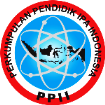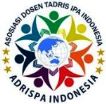Development of Neuroscience-Based Chemistry Teaching Module on Green Chemistry Material
Abstract
This study aims to (1) develop a neuroscience-based chemistry teaching module on green chemistry topics, and (2) produce a valid and practical module for use in classroom instruction. The research employed a Research and Development (R&D) approach, adopting the Thiagarajan 4-D model, comprising four stages: Define, Design, Develop, and Disseminate. The study was conducted up to the Development stage, involving module validation and practicality testing. Research activities took place at Cendana High School, Pekanbaru, with participants including material experts, media experts, a chemistry teacher, and Class X-1 students. Data were collected through interviews, validity and practicality questionnaires, and student response surveys, utilizing a Likert scale. The analysis combined qualitative descriptive methods—capturing feedback, criticisms, and suggestions—with quantitative descriptive techniques to interpret questionnaire data. Results showed that the module’s content validity, assessed by material experts, reached 85.29%, categorized as very valid, while media expert validation yielded 81.25%, also very valid. Practicality tests indicated that chemistry teachers rated the module at 90% (very practical), and student responses achieved 82.96% (very practical). These findings suggest that the neuroscience-based chemistry teaching module on green chemistry is both valid and highly practical, making it suitable for enhancing chemistry instruction.
Keywords: teaching module, neuroscience, green chemistry
Full Text:
PDFReferences
Ayuningsih, F., Sutama, & Suyatmini. (2022). Development of Mathematics Teaching Module on Quantor Material Based on STEAM PjBL at Computer and Network Engineering Vocational School. AKSIOMA: Journal of Mathematics Education Study Program, 11(4), 3285–3299. https://doi.org/10.24127/ajpm.v11i4.6021
Danisa, V. S., Suciati, & Sunarno, W. (2015). Development of a Brain-Based Learning Module Accompanied by a Vee Diagram to Improve Cognitive Domain Learning Outcomes. Proceedings of the National Seminar on Science Education (SNPS), 141-151.
Dewi, N. K. A. M. A., & Suniasih, N. W. (2023). E-Module for the Independent Learning Curriculum Based on Local Wisdom of Bali in the IPAS Subject for Grade IV. Mimbar PGSD Undiksha, 11(1), 91–99. https://doi.org/10.23887/jjpgsd.v11i1.58348
Fatmawati, & Yusrizal. (2020). The Role of the Moral Curriculum in Character Formation at the Sou Parung Bogor Nature School. Thematic Journal, 10(2), 74–80.
Hidayat, A. A. (2021). Compiling Research Instruments & Testing Validity_Reliability. Health Books Publishing.
Jensen, E. (2008). Brain-Based Learning. A New Way in Teaching and Education. Pustaka Pelajar.
Karsini, R., & Ritonga, P. S. (2021). Design and Testing of Student Worksheet (LKPD) Based on Probing-Prompting on the Material of the Periodic System of Elements. Journal of Education and Teaching, 2(1), 53–63. https://doi.org/10.24014/jete.v2i1.8164
Kemendikbudristek. (2021). Minister of Education, Culture, Research, and Technology of the Republic of Indonesia Decree Number 162/M/2021 Concerning the School Driving Program.
Khafid, A. (2016). Development of Neuroscience-Based Learning Devices to Improve Student Learning Outcomes. Prisma Sains: Journal of Science and Learning Studies in Mathematics and Natural Sciences IKIP Mataram, 4(2), 71. https://doi.org/10.33394/j-ps.v4i2.1150
Kurniawati, Y. D. (2019). Research Methods in the Field of Chemical Education. Cahaya Firdaus.
Manalu, J. B., Sitohang, P., Turnip, H. N., & Henrika. (2022). Development of Learning Devices for the Independent Learning Curriculum. Proceedings of the National Seminar on Basic Education, 1(1), 80–86. https://doi.org/10.34007/ppd.v1i1.174
Maulidiningsih, Kusumaningrum, & Ayu, I. (2023). Contextual Learning Model on Green Chemistry Material to Enhance Student Learning Interest. Journal of Chemistry Education, 02(01),11–18.
Mulyani, S. (2015). Basic Chemistry (Volume 1). Alfabeta.
Nurmiati, N., Danial, M., & Arsyad, M. (2023). Development of Project-Based Learning (PjBL) IPAS Teaching Module in the Implementation of Independent Learning. CER: Chemistry Education Review, 6(2), 134–140. https://doi.org/10.26858/cer.v6i2.13315
Salsabilla, I. I., Jannah, E., & Juanda. (2023). Analysis of Teaching Modules Based on the Independent Curriculum. Journal of Literacy and Learning in Indonesia, 3(1), 33–41.
Setianingsih, N. (2023). Application of Practical-Based Learning to Enhance Student Motivation and Learning Outcomes on Green Chemistry Material Utilizing Waste Cooking Oil. Scientific Journal of Madrasah Teachers, 2(1), 33–39. https://doi.org/10.69548/jigm.v2i1.17
Siloto, E. N. T., Hutauruk, A., & Sinaga, S. J. (2023). Development of a Teaching Module Based on the Independent Curriculum on Algebraic Forms in Class VII of SMP Negeri 13 Medan. SEPREN: Journal of Mathematics Education and Applied, 04(02), 194–209.
Solihat, A., Panjaitan, R. L., & Djuanda, D. (2017). Application of Neuroscience Learning Model. Jurnal Pena Ilmiah, 2(1), 451–460.
Sudarmo, U. (2021). Chemistry for High School/MA Class X. Erlangga.
Sugiyono. (2020). Quantitative, Qualitative Research Methods and R&D. Alfabeta.
Zakaria, L. M. A., Purwoko, A. A., & Hadisaputra, S. (2020). Development of Problem-Based Chemistry Teaching Materials with a Neuroscience Approach: Validity and Reliability. Jurnal Pijar MIPA, 15(5), 554–557. https://doi.org/10.29303/jpm.v15i5.2258
DOI: http://dx.doi.org/10.24014/jnsi.v8i1.27058
Refbacks
- There are currently no refbacks.

Journal of Natural Science and Integration
E-ISSN: 2620-5092 P-ISSN: 2620-4967
Published By:
Department of Science Education, Faculty of Education and Teacher Training,
State Islamic University of Sultan Syarif Kasim Riau, Indonesia
Mailing Address:
Jl. H.R Soebrantas Km. 15 No. 155
Kelurahan Simpang Baru
Kecamatan Tuah Madani, Pekanbaru, Riau, Indonesia
Email: jnsi.tadrisipa@uin-suska.ac.id
Indexed By:
Journal of Natural Science and Integration is licensed under a Creative Commons Attribution 4.0 International License.


_-_Copyy2.png)






.jpg)
.png)
.jpg)
.jpg)




